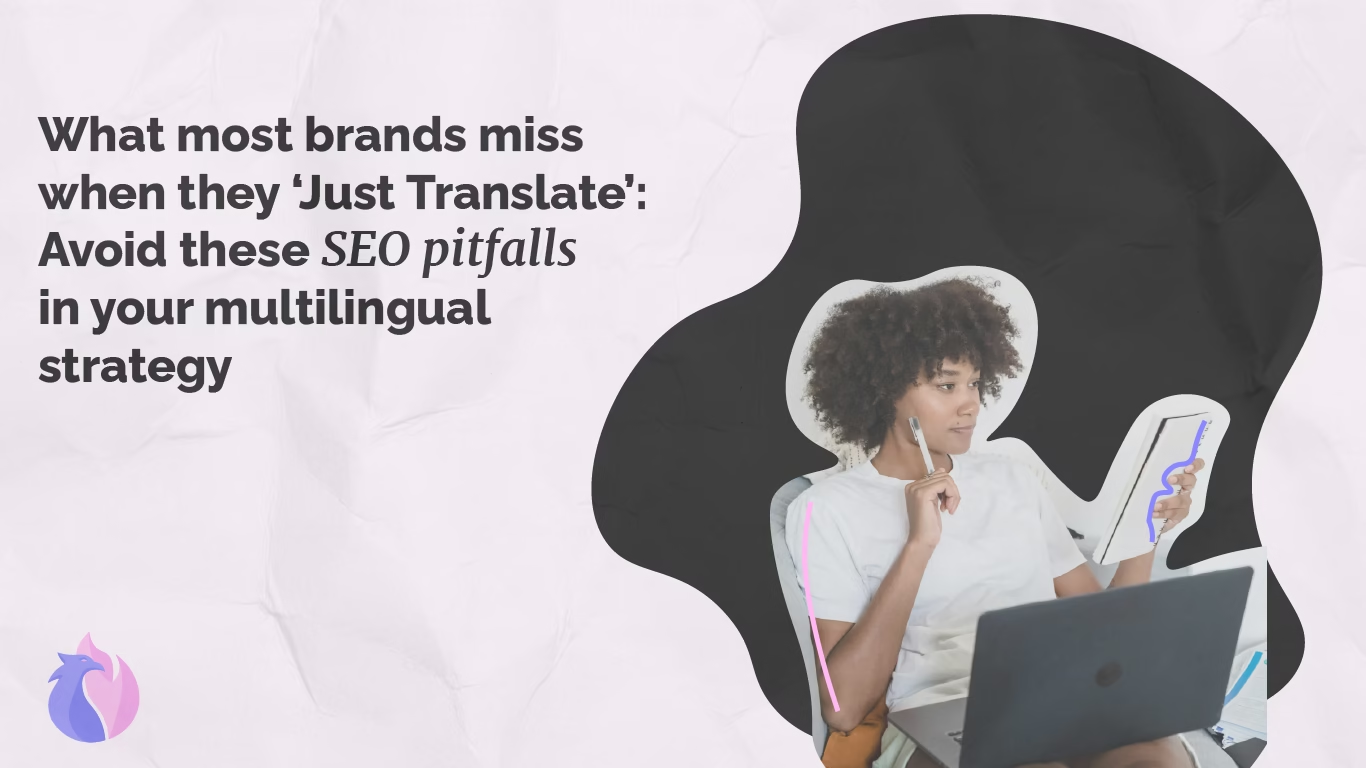
So, you’ve translated your website. Awesome! You’re ready to go global… right?
Well, not quite.
Translating your content is a great first step—but if you stop there, you’re likely leaving a lot of traffic, trust, and conversions on the table. The truth is, many brands treat translation like a checkbox, and end up missing out on what really makes a multilingual site successful: visibility, clarity, and connection.
Let’s break down the most common things brands overlook when they “just translate”—and how you can avoid those traps.
1. Your content is in another language, but Google doesn’t know it exists
Here’s a quick SEO secret: search engines don’t automatically understand which version of your content belongs to which audience.
That’s where hreflang tags come in. They tell Google, “Hey, this is the Spanish version for Spain,” or “This is the French version for Canada.”
Without them, your pages might:
- Compete with each other in search results
- Show the wrong version to the wrong people
- Miss out on traffic altogether
🛠️ Quick fix: Make sure every version of your page includes hreflang tags. If you’re not sure where to start, tools like Screaming Frog or Ahrefs can help spot issues.
2. You translated your site… but it’s not showing up in search results
This one’s frustrating. You’ve spent hours translating your site into several languages, but it’s nowhere to be found on Google. What gives?
Often, it’s not a translation problem—it’s a technical SEO problem:
- Your pages might be blocked from indexing
- They’re missing from your sitemap
- There’s no internal link leading to them
🛠️ Quick fix:
- Double-check that your translated pages are indexable (not blocked by robots.txt or tagged as “noindex”)
- Submit them in Google Search Console
- Make sure they’re linked from your homepage or menus—Google needs a way to find them!
3. Translation ≠ Localization
This is a big one. A lot of translated content sounds… weird. Not wrong, but off.
That’s because it’s been translated word-for-word, without adapting to the local culture or audience. Think about:
- Currency and date formats
- Tone of voice
- Idioms, humour, or regional expressions
Would you say “Get in touch!” the same way in English, Italian, and German? Probably not.
🛠️ Quick fix: Don’t just hire translators—work with native speakers who understand your audience and your brand. At Mitlia, that’s exactly what we do: blend AI speed with human sense.
4. You’re using translated keywords—but nobody’s searching for them
Let’s say your English SEO keyword is “cheap electric cars.” You translate it into Spanish as “coches eléctricos baratos.”
Sounds fine, right?
But in Mexico, people might be searching for “autos eléctricos económicos” instead. Same idea, different words—and different search results.
🛠️ Quick fix: Do separate keyword research for each language and region. Don’t just translate your keywords—make sure they match local search habits. Use tools like Semrush or Ubersuggest to dig into what people actually type.
5. Your site looks multilingual—but only one version gets updated
Here’s something we see all the time: the English version of a site is fresh, regularly updated, and full of new content… but the French and Spanish pages? Months out of date.
Not only is that bad for SEO—it can also look sloppy and unprofessional to international users.
🛠️ Quick fix:
- Set up a system to keep your content aligned across languages
- Use a translation management tool or workflow
- Or work with a partner (like Mitlia 😉) who keeps everything in sync
6. Your language switcher is awkward—or missing completely
Few things are more frustrating than landing on a page in the wrong language, with no obvious way to change it.
Some sites auto-detect your IP and redirect you—often incorrectly. Others bury their language menu in the footer. Some just don’t have one at all.
🛠️ Quick fix:
- Always give users a visible, user-friendly language selector
- Let people choose the language they prefer (don’t force it based on their IP)
- And don’t forget to check that your design still works when the text gets longer in other languages (like German or Finnish—they love long words!)
✅ Your Multilingual Website Checklist
Here’s a quick 10-point checklist to keep your multilingual content on track:
- ✅ Add hreflang tags to every language version
- ✅ Submit all versions in Google Search Console
- ✅ Update your sitemap with translated URLs
- ✅ Do local keyword research, not just translation
- ✅ Translate meta titles, descriptions, and alt text
- ✅ Make sure pages are indexable (no “noindex” tags!)
- ✅ Link to your translated pages from your main site
- ✅ Localize tone, format, and messaging
- ✅ Keep all versions updated regularly
- ✅ Add a clear, accessible language switcher
Final thoughts: Go global, but do it right
Translating your website is a great move—but it’s only the beginning. If you want your content to actually reach and resonate with people around the world, you need to go beyond words.
It’s about visibility, relevance, and user experience. In short: it’s about strategy.
At Mitlia, we help brands avoid these common mistakes by combining tech-powered translation with real human expertise. Whether you’re launching your first multilingual site or need to audit an existing one, we’re here to help.
👉 Want us to take a look at your multilingual setup?
Let’s chat. Contact us here.

Deja una respuesta